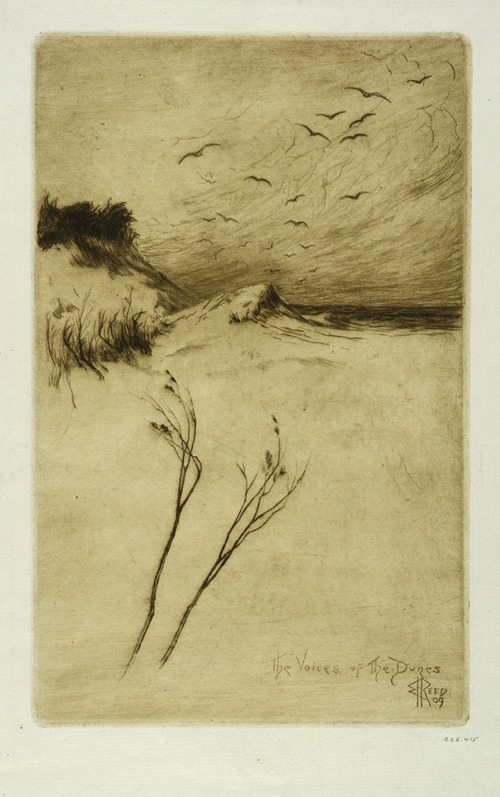
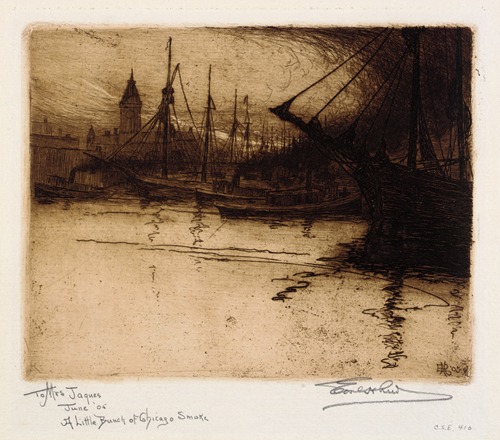
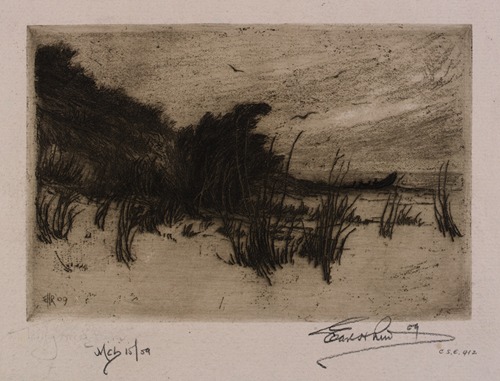
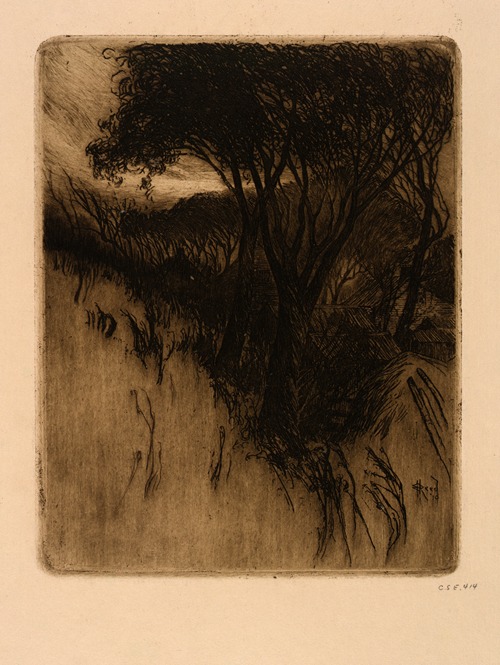
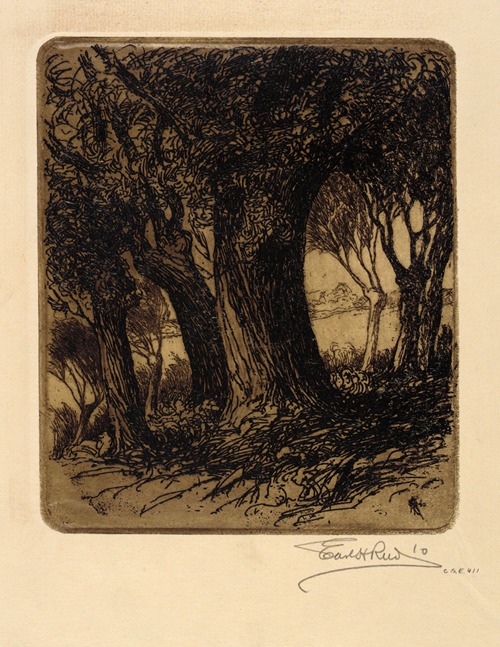
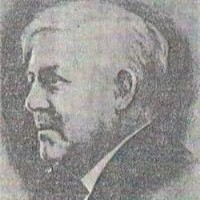

Earl Howell Reed was a printmaker, photographer, and author. Initially, he worked as a reporter for the old Chicago Times and then he met Mr. Hutchinson, of the Chicago board of Trade, who introduced him to the business. He worked for twenty years as a grain broker in the Chicago Stock Exchange but retired in 1910 to pursue his interests in art and writing. He explored the area known as the Dunes on the southern and eastern shores of Lake Michigan and found there a landscape that compelled him to sketch and write. He authored The Voices of the Dunes in 1912 and followed by The Dune Country in 1916 and Sketches in Duneland in 1918.
Reed brought so much attention to the Dunes and the need to conserve the natural habitat that the Indiana State Legislature established the Indiana Dunes State Park in 1923. As an artist he was primarily self-taught but in 1914 Reed wrote a manual on etching entitled Etching: A Practical Treatise. In 1910, he was a founding member of and first president of the Chicago Society of Etchers, and also held memberships in the Chicago Camera Club, the Chicago Society of Artists, the Society of Midland Authors, the Writer's Guild, the Cliff Dwellers, and the Masonic Order.




